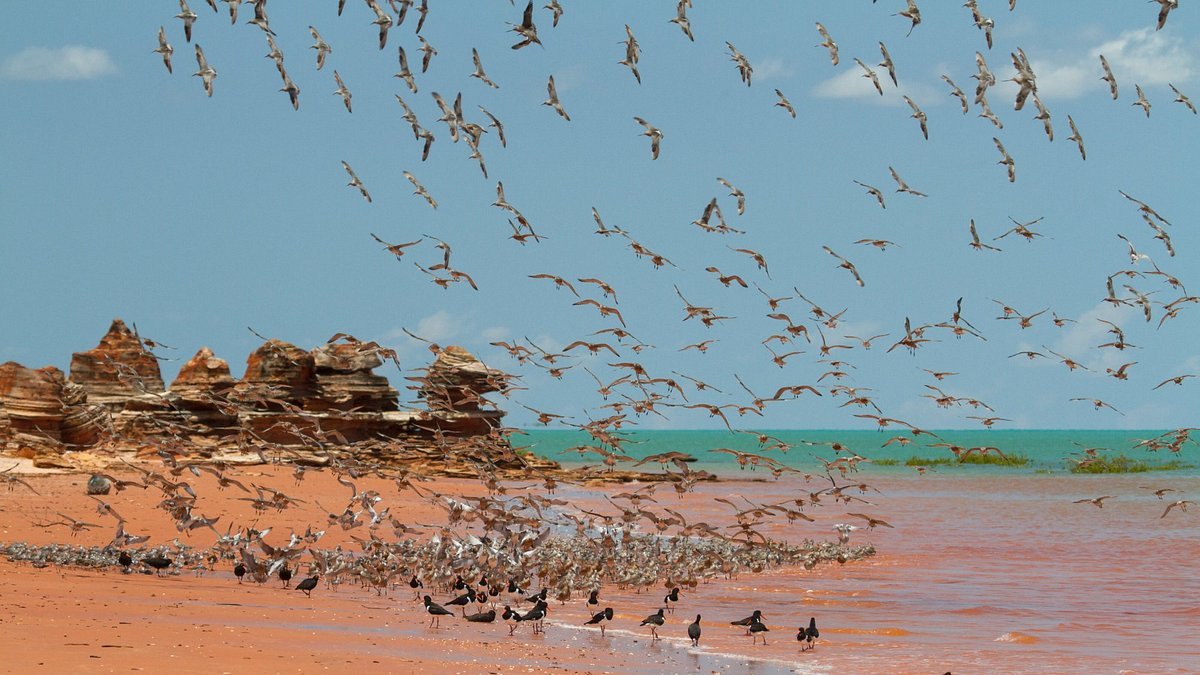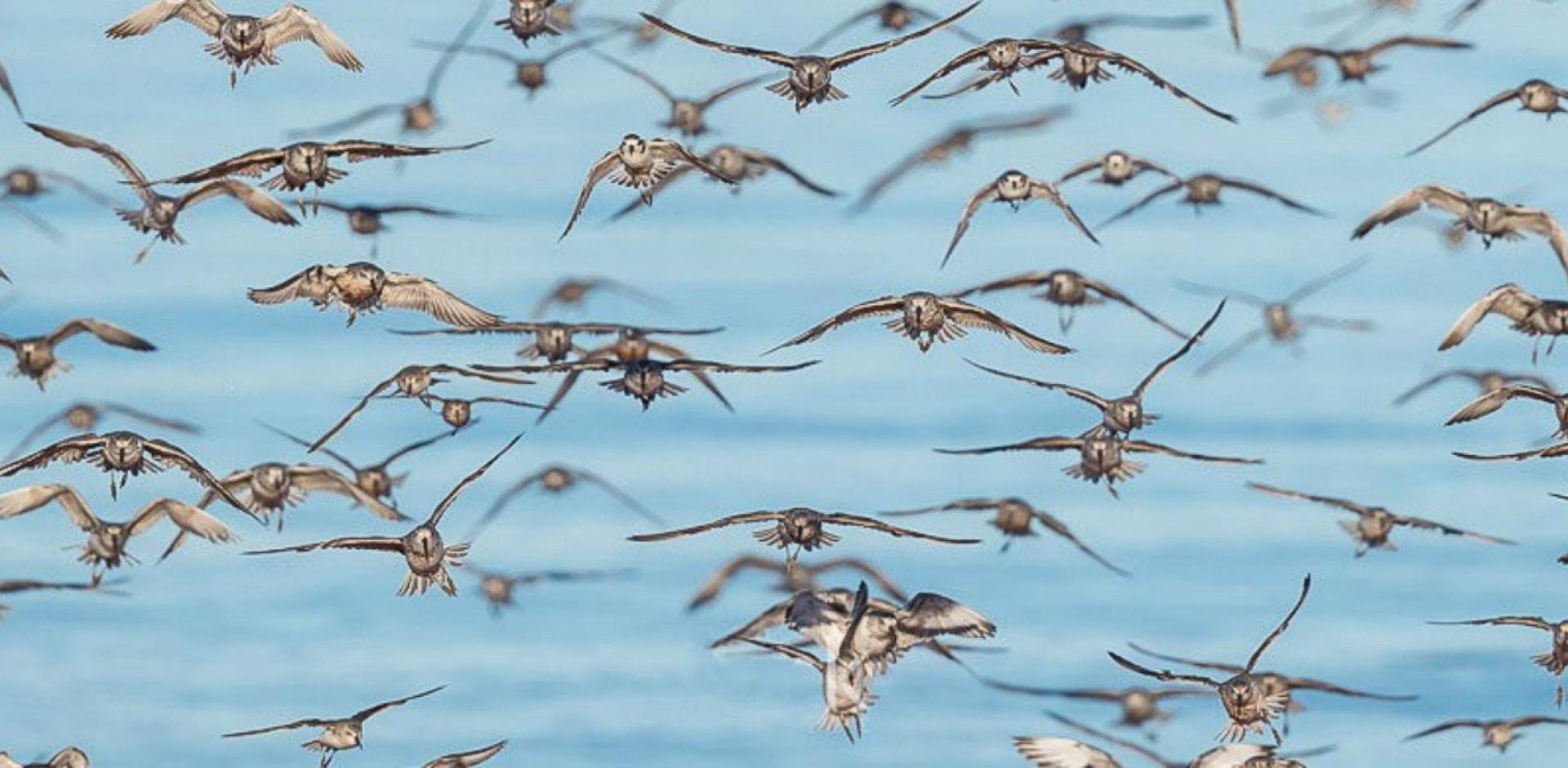Spotlight: Broome Bird Observatory
Credit: Broome Bird Observatory
Back in early 2018, we first launched our Custom Order Program: opening up our supply chain to help other organizations create custom sustainable hats. One of our earliest adopters was the Broome Bird Observatory (BBO), based in Australia. Four years later, we are proud to support many more change-making NGOs like the BBO.
Credit: Campervan Finder
As we see the setting sun during this brisk March afternoon by the North-Western Australian coast, we can hear the tide coming in as it makes contact with the sand, accompanied by the smell of sea salt in the air. We witness thousands of shorebirds coming together in preparation for their long journey back to their nesting grounds as it is that special time of the year. As we will only see them again by late August with their new offspring in order to make the most of what Roebuck Bay has to offer them.
Roebuck Bay is located in North-Western Australia and is known for being a hotspot for shorebirds to come and feed depending on the season. During low tide, Roebuck Bay,a 175 KM2 mudflat, transforms into a feeding ground, filled with an endless variety of arthropods, drawing the curious attention of thousands of hungry shorebirds. These diverse shorebirds have beaks of all different shapes and sizes. Thanks to the rich biodiversity of Roebuck Bay, there’s a special meal waiting for each one. Not only is Roebuck Bay home to rich wildlife, but it is also the main area of operation for the Broome Bird Observatory also known as the world’s top wader and shorebird organization.
Credit: Broome Bird Observatory
The non-profit organization was founded in 1988 as the world’s largest shorebird migration site, a subsidiary of a larger group known as Birds Australia. The purpose of creating the Broome Bird Observatory (BBO) was to create a hub that specifically focuses on the wellbeing of the migratory shorebirds of Roebuck Bay, who play a crucial role in the health of the Bay’s ecosystem. For over 30 years,the organization has been operating, documenting, promoting and educating the community about Roebuck Bay and the amazing birdlife of the region. The BBO documents all birds that are seen within a 70 KM radius of their observatory in order for them to keep track of population of these birds, also taking note of which birds are first to arrive during the low tide season in an effort to understand their flight patterns and behavior. In addition, the BBO provides an array of programs such as on-site camping, tours, and a number of educational classes for those who want to explore further into birdlife in Broome. In short, the Broome Bird Observatory is passionate about the various shorebirds that come to their adjacent bay every few months and have the pure intention of promoting the knowledge of the Roebuck Bay shorebirds.
Not many know about these shorebirds and the interesting life cycle that they live flying nearly 5,000 KM every five days to make their trips from their breeding grounds back to Broome. The flight path that these amazing birds take is known as the Eastern Asian Australasian Flyway (EAAF), which goes from all around Australia and New Zealand all the way up to North Eastern Russia and sometimes even Alaska. Sadly, it is evident that human development is a threat to these birds as most of the liveable areas within these bays are disappearing, which could cause a decrease in population. It is a known fact that a mere 9% of migratory birds are considered “safe” when it comes to their habitat. The typical migratory bird relies on many different locations to breed, rest, and forage, with these locations disappearing at a time, it is the bird’s largest threat next to climate change. The work and public campaigns conducted by organizations like the BBO are crucial for monitoring the stability of the population of these birds. Their 34 years of experience in educating and spreading awareness illustrates their effective methods of public engagement for audiences of all ages.
Credit: Broome Bird Observatory
The Broome Bird Observatory is much more interactive and accessible than most observatory organizations. The BBO has numerous activities for visitors to learn, observe, and become familiar with their daily operations.. Other than tours, they have also set up accommodation for on-site camping for those that would like to spend a little longer in the Jawara countryside. In addition to tours and facilitating camping, the BBO has a set of classes for not only children, but also for adults who want to dive deeper into the importance of these migratory shorebirds. The organization has classes ready for play-group, primary, secondary, and also classes for TAFE students, which is essentially a tertiary education level. Through their dedication and initiative of arranging these multi-leveled classes, we can see that the Broome Bird Observatory is quite serious in making an impact towards the next generation, to spread knowledge and information about the amazing birdlife at a young age.
As an organization, the BBO is a paradigm example of what it means to be an authentic organization who is dedicated to their mission, whilst finding effective new ways in spreading awareness about these amazing birds. We commend the Broome Bird Observatory for utilizing their land in the best possible way, thereby creating a localized impact so that people can spend more time learning about Roebuck Bay and its birds.
Works Cited
Who We Are. (n.d.). Broome Bird Observatory. http://www.broomebirdobservatory.com/support-us
BBO resources. (n.d.). Broome Bird Observatory. http://www.broomebirdobservatory.com/new-page-2
Original story published by The Mirror. Results from a new study. (2016, January 25). Audubon Louisiana. https://la.audubon.org/news/habitat-loss-could-spell-trouble-91-percent-migratory-birds#:%7E:text=Original%20story%20published%20by%20The,protection%20across%20their%20entire%20ranges.
Education. (n.d.). Broome Bird Observatory. http://www.broomebirdobservatory.com/education-resources




